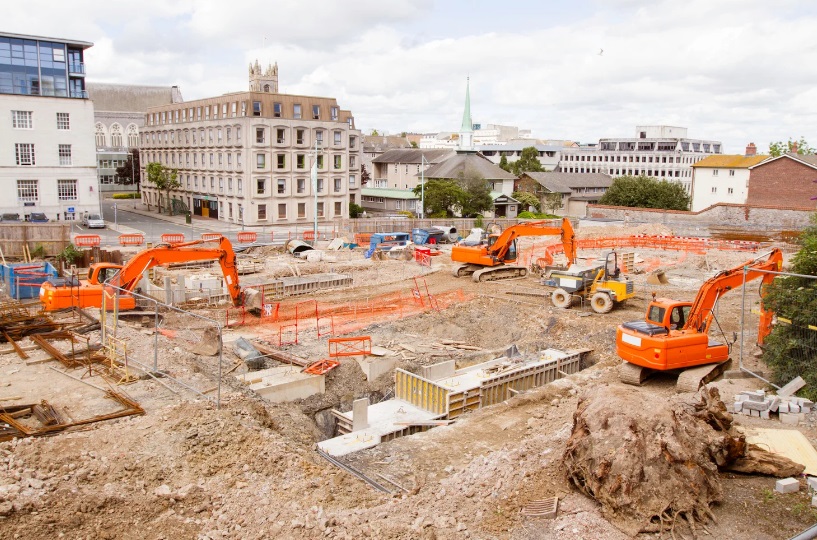The Construction Sector
The construction sector in Scotland is a vital contributor to the nation’s economy, playing a central role in infrastructure development, housing, and achieving environmental targets. In 2022, the sector’s output was estimated to be over £13.3 billion, and it employed 231,000 people in 2021. It not only contributes significantly to Scotland’s GDP but also enables growth across other sectors by building essential infrastructure for energy, transport, and digital connectivity.
Economic Significance:
The construction sector directly supports over £9 billion in Gross Value Added (GVA) and 135,000 full-time equivalent (FTE) jobs. Public sector procurement in construction amounted to £3.4 billion in 2021/22, highlighting the government’s significant influence on the sector. The largest sub-sectors include specialized construction services, the construction of buildings, and civil engineering. The sector’s impact extends beyond direct employment and output through its supply chains and the spending of its workforce, creating substantial indirect and induced economic effects.
Key Areas and Trends:
- Housing: The share of housing within the overall construction mix rose to over 22% in 2022, indicating a strong focus on residential development. There’s also a growing emphasis on sustainable and energy-efficient housing solutions to meet Scotland’s net-zero targets.
- Infrastructure: Infrastructure projects, including renewable energy facilities like wind farms and transport networks, are a significant part of the sector. These projects are crucial for Scotland’s energy transition and overall economic development.
- Commercial and Industrial: Demand for flexible commercial spaces and advanced manufacturing facilities is growing, particularly in major cities and the burgeoning technology sector.
- Sustainability: With Scotland’s commitment to net-zero emissions by 2045, sustainable building practices, the use of eco-friendly materials, and energy-efficient designs are becoming increasingly central to construction projects.
- Innovation: Modern methods of construction like Building Information Modeling (BIM), prefabrication, and modular construction are being adopted to improve efficiency and reduce costs. Digital twins and the Internet of Things (IoT) are also enhancing project planning and building performance.

Challenges:
The Scottish construction sector faces several significant challenges:
- Skills and Labor Shortages: An aging workforce and difficulties in attracting younger workers are leading to shortages of skilled labor across various trades. The Construction Industry Training Board (CITB) estimates that Scotland will need over 26,000 additional construction workers in the next five years.
- Rising Costs: Fluctuations in material costs and labor expenses can impact project budgets and timelines.
- Regulatory Changes: New regulations related to environmental sustainability, building standards, and employment rights require the sector to adapt and ensure compliance. The Future Homes Standards becoming compulsory in 2025, for example, necessitate a shift towards low-carbon heating and stringent energy efficiency measures.
- Planning and Approval Delays: Obtaining necessary permissions, especially for major housing developments, can be a lengthy process, causing project delays.
- Economic Uncertainty: Broader economic conditions, including inflation and interest rates, can affect investment and project starts in the construction sector.
Future Outlook:
Despite the challenges, the outlook for the construction sector in Scotland has areas of optimism:
- Government Investment: The Scottish Government’s Infrastructure Investment Plan and commitment to public sector projects provide a pipeline of future work. The Construction Pipeline Forecast Tool offers visibility into planned projects, aiding business planning.
- Growth in Retrofit Projects: There is an anticipated increase in retrofit projects aimed at improving the energy efficiency of existing buildings, aligning with net-zero targets.
- Opportunities in Renewable Energy: Scotland’s focus on renewable energy development will drive demand for construction work related to wind farms, hydropower, and other green energy infrastructure.
- Technological Advancements: The increasing adoption of advanced technologies can improve productivity and help mitigate labor shortages.
Key Players:
The construction sector in Scotland includes a mix of large contractors and numerous small and medium-sized enterprises (SMEs). Notable companies operating in Scotland include Kier, Laing O’Rourke, Balfour Beatty, and Galliford Try. The Construction Leadership Forum (CLF) plays a crucial role in bringing together industry and public sector stakeholders to drive strategic improvements in the sector.
In conclusion, the construction sector is a fundamental pillar of the Scottish economy, contributing significantly to its output and employment while playing a crucial role in delivering essential infrastructure and housing. While facing challenges such as skills shortages and rising costs, the sector has opportunities for growth driven by government investment, the focus on sustainability, and technological innovation. Addressing the existing challenges and capitalizing on these opportunities will be crucial for the continued success and evolution of the construction sector in Scotland. Sources and related content

